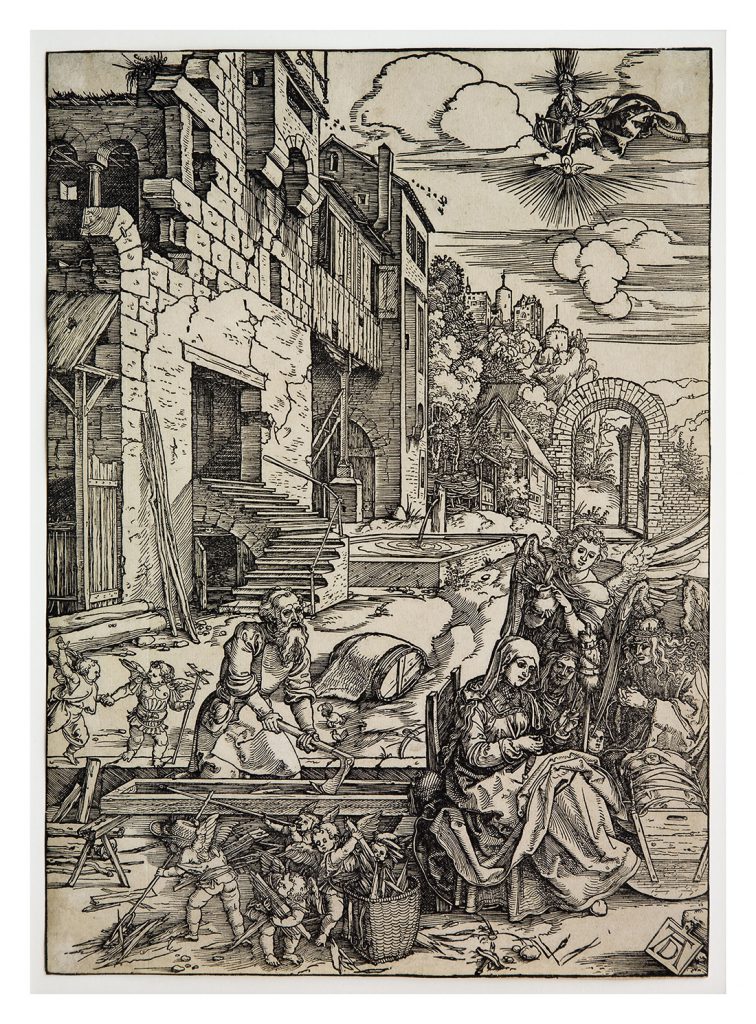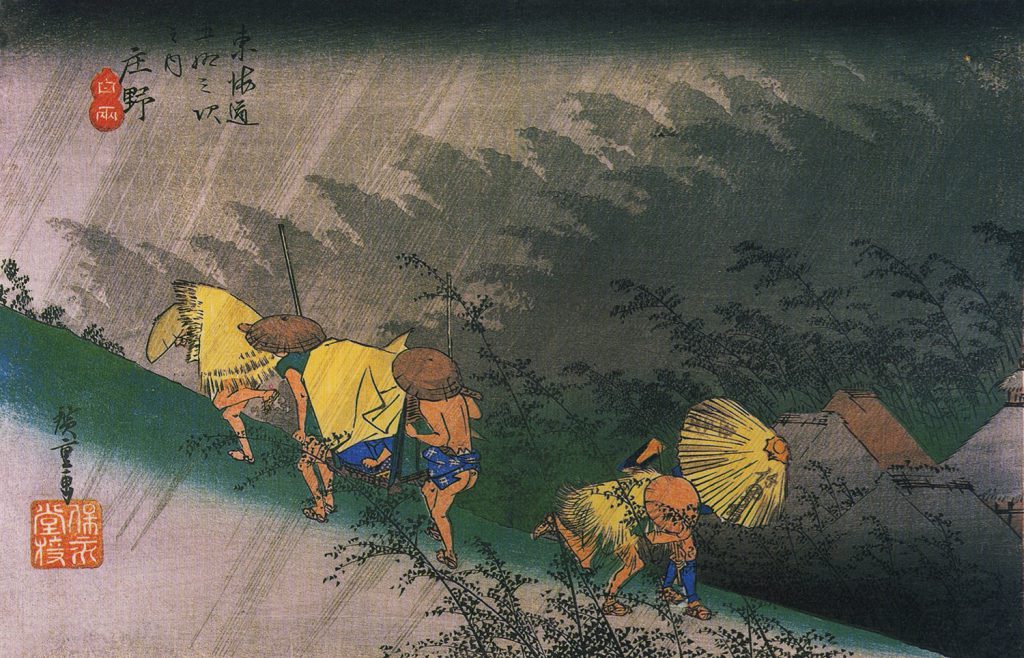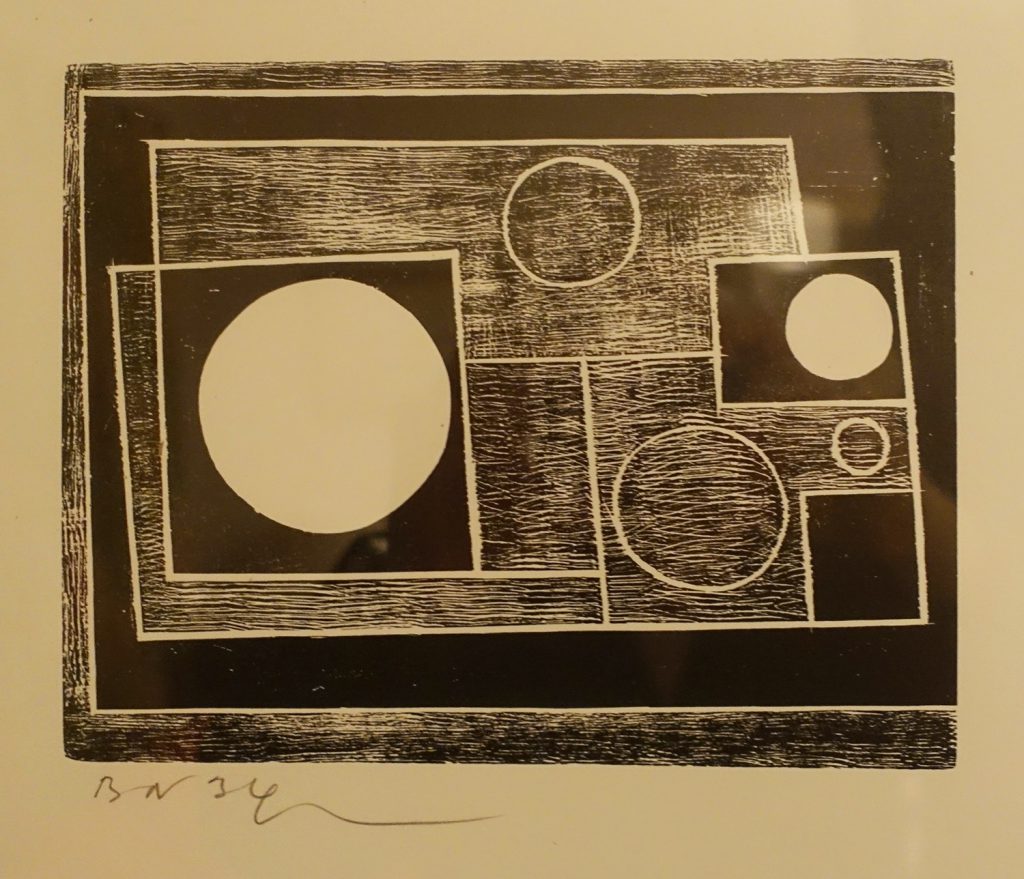
An intimate exhibition ‘The Woodcut: from Dürer to Now’ has just opened at the Pallant House Gallery, Chichester. It examines the art of the woodcuts and wood engravings from the time of the Renaissance to today.
To produce a woodblock print the artist’s design would be pasted to the block so that the engraver could cut the image into the wood. The printer would then print the image.
The first woodcut in the exhibition is an image by the Renaissance artist Albrecht Dürer (1471-1528). Produced in 1511, it comes from a series of prints he made illustrating scenes from the life of the Virgin Mary. Dürer’s treatment of the scene is revolutionary. The infant Jesus sleeps whilst Mary spins yarn in the company of Joseph and two attendant Angels. The group are watched over by the Holy Spirit depicted as a dove in the heavens. There is a gentle domesticity to the scene in contrast to the urgency of their flight from Herod. Note also Dürer’s treatment of perspective in the buildings and landscape.
Straight grained cherry was often used in the production of Japanese woodcuts as it allowed for fine detail to be carved. As many as ten blocks were used to achieve the diversity of colour. At each stage of the process proofs would be made for approval.

One of the best known of all Japanese woodcut designers is Utagawa Hiroshige (1797-1858). Hiroshige’s landscape prints are internationally acclaimed and are amongst the most frequently reproduced of all Japanese works of art. They are defined by their unusual compositions and humorous depictions of people involved in everyday activities. His exquisite observation and depiction of weather, light and season are exemplary. Hiroshige’s work proved hugely influential for many leading European artists including Claude Monet and Vincent van Gogh.
Hiroshige combined his print making with his inherited position as a fire warden. In 1832 he was invited to join an embassy of Shogunal officials on a journey which allowed him to observe the Tokaido Road, the Eastern sea Route which followed the coast through mountain range to Kyoto. The resultant series was called ‘Tokaido Go-ju-san-Tsugi’ (The Fifty-three Stations of the Tokaido), from which ‘Travellers surprised by sudden rain (Shono haku-u)’ is taken. It portrays farmers and porters running for shelter as the sudden downpour of rain darkens the sky and obscures the mountains. The figures, angle of the rain and the wind in the trees, lends the image a sense of urgency and movement.
In the early part of the 20th Century there was a revival of woodblock engraving in Britain. The strength of contrast in the black and white, and the softness of line, seemed to articulate something particular to a generation who had lived through the First World War.

Ben Nicholson (1894-1982) was a leading artist in British Modernism. ‘5 Circles’ was the only woodcut he made before the Second World War. It was commissioned by Anatole Jakovski in 1934. Proof copies of this abstract print are known to exist and Nicholson must have preserved his block as a further reprint was produced by Kestner Gesellschaft in 1962.
Entrance to this intimate exhibition is free thanks to the generosity of its sponsor, De’Longhi. The show runs until 25th June 2017 at Pallant House Gallery, Chichester. Further details of this and the gallery’s other current exhibitions (which are really worth the ticket price) can be found at www.pallant.org.uk.
By Rupert Toovey, a senior director of Toovey’s, the leading fine art auction house in West Sussex, based on the A24 at Washington. Originally published in the West Sussex Gazette.